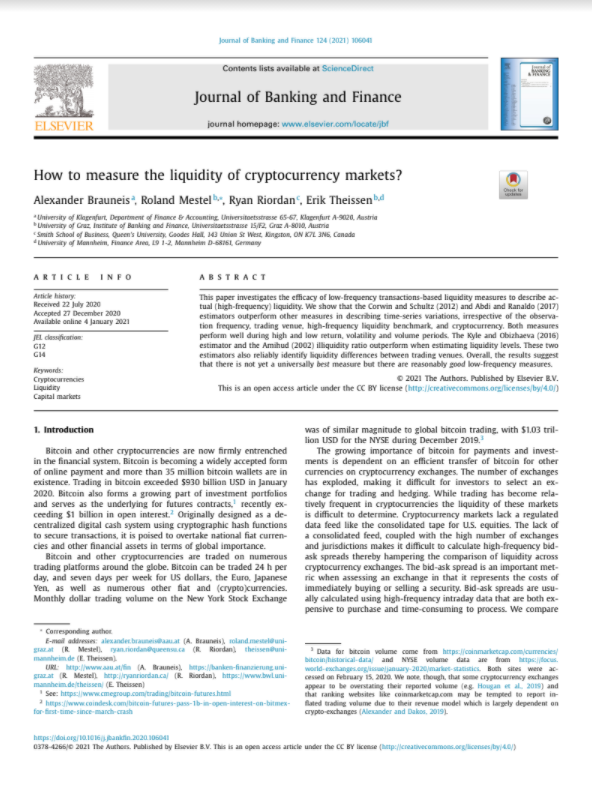
How to measure the liquidity of cryptocurrency markets
By: Alexander Brauneis a , Roland Mestel b,∗ , Ryan Riordanc , Erik Theissen
Published: 2021-01-01
Organization: Journal of Banking and Finance
Tags: Cryptocurrencies, Liquidity, Capital, markets
Overview: This paper investigates the efficacy of low-frequency transactions-based liquidity measures to describe actual (high-frequency) liquidity. We show that the Corwin and Schultz (2012) and Abdi and Ranaldo (2017) estimators outperform other measures in describing time-series variations, irrespective of the observation frequency, trading venue, high-frequency liquidity benchmark, and cryptocurrency. Both measures perform well during high and low return, volatility and volume periods. The Kyle and Obizhaeva (2016) estimator and the Amihud (2002) illiquidity ratio outperform when estimating liquidity levels. These two estimators also reliably identify liquidity differences between trading venues. Overall, the results suggest that there is not yet a universally best measure but there are reasonably good low-frequency measures
